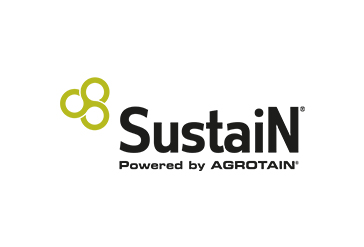Good mileage from hay and silage
Make the most of good growing conditions to generate conserved feed but watch the impact on your soil’s nutrient status.
While grazed pasture is the cheapest form of feed, growing your own conserved feed is the next best thing, and a good option to meet a feed gap and/or supplement forage crops later in the season.
In spring, it’s easy for growth to get away on you, leaving higher than ideal post-grazing residuals. Grazing plants at the three-leaf stage provides stock with nutritious feed and allows pasture to recover quickly. If you let pasture get too long, seed heads and dead matter reduce the quality of the pasture, meaning you don’t get the best possible value from it.
Using pasture management tools such as feed wedges and rotation planners can help you predict and manage pasture surpluses. In a surplus situation, allocating some paddocks to hay or silage production can help you keep remaining pasture in better shape.
Boosting yield
If you’ve identified a surplus and have decided to make hay while the sun shines, your focus should be on achieving the best possible results from those closed paddocks.
If no other nutrient is limiting production and conditions for growth are right, then applying nitrogen before you close the paddocks can increase yield.
Spring pasture responses will lie somewhere between 10:1 and 20:1. That is every kilo of applied nitrogen will grow between 10 and 20 kilos of dry matter, within three to four weeks of application.
SustaiN is a good option if five to 10 mm of rain or irrigation is unlikely to fall within eight hours of application. This is to reduce nitrogen losses from ammonia volatilisation. SustaiN Ammo or PhaSedN Quick Start are alternatives if lack of sulphur is likely to limit the effectiveness of nitrogen application.
A post-harvest application of nitrogen will boost yields from a second cut or reduce the time the paddock is out of rotation. SustaiN K is ideal for this as it replaces some of the potassium which hay/silage removes in large amounts, ensuring this doesn’t limit the new growth.
Again, the size of the pasture response for this second (and any subsequent) harvest will depend on growth conditions. Moisture can often be the critical factor during summer.
Keep fertility in good shape
Every tonne of dry matter removes around 5 kg of phosphate, 3 kg of sulphur, 2 kg of magnesium and a massive 15 to 20 kg of potassium for hay and silage respectively.
If hay or silage is fed out on the paddock from which it was cut, some of the nutrient content will be returned to the soil in dung or urine. However, if it is fed out elsewhere on the farm its nutrient value goes with it. Either way, if the nutrients are not replaced, pasture quality will eventually suffer.
K and clover recovery
When you let grass grow for hay or silage production, clovers get shaded out. They will take a while to recover once the silage/hay has been cut. Clovers are poor nutrient scavengers compared to grasses and are easily out-competed if any nutrient is in short supply. In a post-harvest situation, lack of potassium can easily limit clover growth with consequences for your pasture quality and nitrogen needs further down the line.
Replacing potassium after the final harvest addresses this and also avoids luxury consumption issues. Plants like to take up available potassium and keep it in reserve to balance out their ‘electrical engines’ during growth periods. Luxury consumption reduces the return from your fertiliser investment and can elevate potassium levels in your conserved feed and/or re-growing pasture, which may contribute to metabolic issues in stock if not taken into account.
Post-harvest fertiliser does not replace normal maintenance fertiliser. It is an extra application that takes care of the nutrients removed by the harvest alone. You can either apply replacement fertiliser separately after harvest or combine it with maintenance fertiliser, ensuring a heavier rate goes on your hay and silage paddocks. Carrying out split applications is preferred if winter leaching is a risk, or if large amounts of K are required to achieve the desired soil test range.
Aimee Dawson
Science Extension Officer
Ballance Agri-Nutrients

